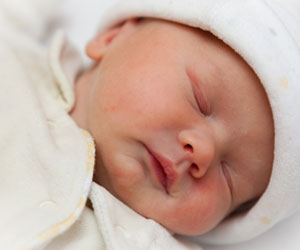
Open any major news site this week and you’re bound to come face-to-face with a startling headline linking the age-old practice of swaddling to an increased risk for sudden infant death. A new study published this month in the journal Pediatrics had researchers poring over data collected from 4 observational studies about SIDS and sleep safety.
While some are crafting wildly sensational headlines around this research (e.g. Swaddling leads to SIDS!), the published study is really much more simple: When parents don’t follow standard sleep safety guidelines and they swaddle, their children are indeed at an increased risk for SIDS.
Read more: Your newborn care survival guide for the first 3 months
The details
The study grouped swaddled infants into 3 categories: Babies who were put to sleep on their stomachs, babies who were put to sleep on their sides, and babies put to sleep on their backs. The conclusion is no surprise: The SIDS risk for swaddled infants put to sleep on their stomachs and sides increased by about one-third.
To swaddle or not?
Swaddling, the act of tightly wrapping an infant from the neck down in a light blanket, is touted by many as a cure-all for fussy babies. Swaddling may ensure longer sleep times and help your little one relax enough to eat. When done correctly and safely, swaddling can mean the difference between a full-out scream session and an hour or two of restful sleep.
What is safe swaddling?
If you’ve stepped inside a maternity ward lately, you’ve likely heard the mantra “back is best.” This is the basis for building a safe sleep environment. Here’s what else you need to know:
- Each time you put your baby down to sleep, swaddled or not, ensure he or she is resting on his or her back.
- Never put baby to sleep on a couch, lounger, or other surface where he or she can roll off.
- Keep the crib free of bumper pads, loose blankets, stuffed animals and toys.
- When baby shows signs of beginning to roll, stop swaddling.
Read more: Could crib bumper pads be the biggest risk to your baby?
The bottom line
The Pediatrics study underscores the importance of following strict safety guidelines for infant sleep. Swaddling in itself is not a dangerous practice, but when combined with unsafe sleep habits, it can have tragic repercussions. As lead author Anna Pease told the New York Times,
“We already know that side and prone sleeping are unsafe for young babies, so the advice to place children on their backs for sleep is even more important when parents choose to swaddle them.”


Leave a Reply